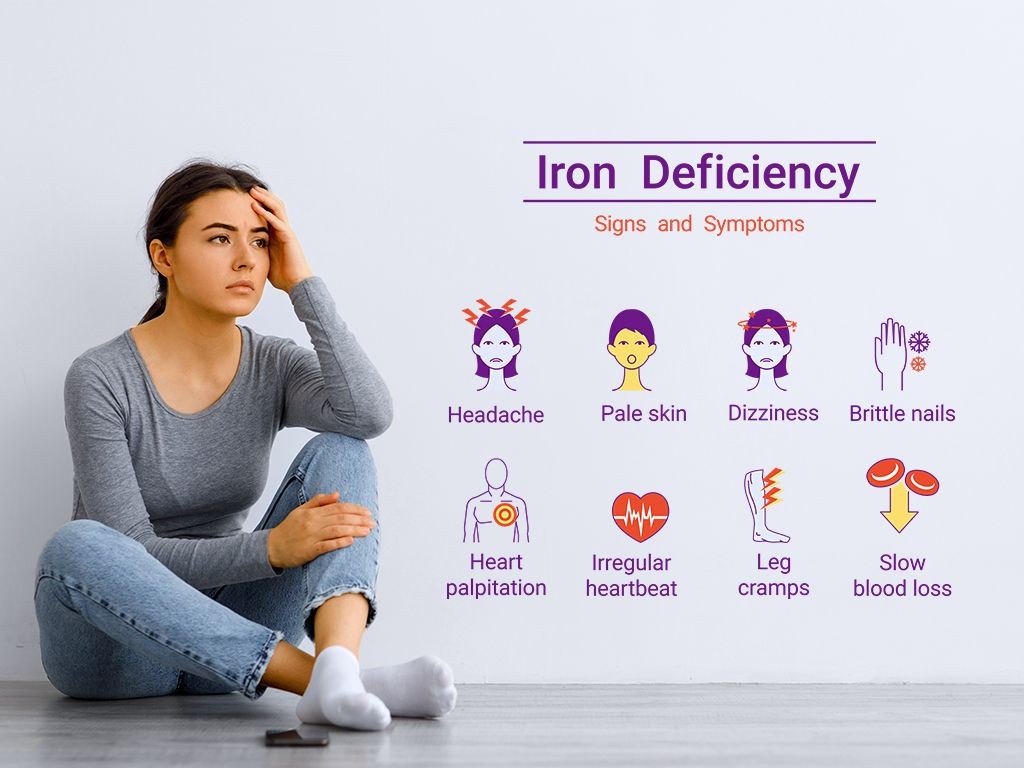
Contents
Causes of Low Iron
Iron is an essential mineral for human functioning. Causes of low iron include colon cancer, IBD, heavy periods, traumatic injury, and other factors.
Iron, a mineral necessary for human function, is a vital component of hemoglobin, which exists in red blood cells. Hemoglobin transports oxygen from the lungs to all body cells. Insufficient iron hampers the ability of hemoglobin to carry out its role effectively.
Low iron can progress to iron deficiency anemia, one type of anemia affecting people. Iron deficiency anemia is a global health issue, impacting 4 to 5 million Americans yearly.
Common signs of iron deficiency are:
Low iron affects rapidly growing cells, including hair and skin. With iron deficiency, you may experience:
- Rough, dry skin
- Dry or damaged hair
- Hair loss
What Causes Low Iron?
Low iron can develop due to various reasons, such as:
- Inadequate dietary intake of iron
- Inefficient absorption of ingested iron
- Loss of red blood cells containing iron
Additionally, iron deficiency may occur during pregnancy when iron needs increase.
Blood Loss as a Cause of Low Iron
Blood loss is the primary cause of iron deficiency:
A person with low iron may experience blood loss in the gastrointestinal system. Causes of this blood loss include:
- Colon cancer
- Inflammatory bowel disease
- Ulcers
- Celiac disease or other GI disorders
Blood loss may also result from:
- Heavy menstrual periods
- Traumatic injuries or surgery
- Bleeding during childbirth
- Long-term use of nonsteroidal anti-inflammatory drugs (NSAIDs), like aspirin and ibuprofen
- Urinary tract bleeding
If any of these conditions cause blood loss, treatment for the underlying cause is necessary, possibly requiring a specialist.
Problems with Iron Absorption
Some individuals develop iron deficiency due to poor iron absorption.
Common causes of inefficient iron absorption are:
Celiac disease: Celiac disease is a reaction to gluten, a protein found in grains. It damages the small intestine, impairing iron absorption. Iron deficiency often manifests as the initial symptom of celiac disease. Removing gluten from the diet and allowing the intestine to heal can restore iron levels, which may take up to 18 months.
Gastric bypass surgery: This surgical procedure redirects food away from the initial part of the small intestine where iron absorption occurs. Six months after surgery, iron levels should be checked, followed by annual checks. Dietary changes may provide enough iron, or iron supplements might be necessary.
Infection with helicobacter pylori: Some studies suggest a link between low iron levels and helicobacter pylori, a bacterium causing stomach ulcers. Individuals infected with h. pylori often have low levels of ascorbic acid (vitamin C) in their stomach, which aids iron absorption. Hence, its absence can lead to low iron levels.
Inadequate Iron Intake
Low iron may result from insufficient dietary consumption. Iron in food occurs in two forms: heme and non-heme. Heme iron is exclusive to meat, while non-heme iron is found in plant-based foods like nuts, seeds, legumes, and leafy greens. Meat can also contain non-heme iron due to animal intake of plants. In several countries, including the United States, non-heme iron is added to certain grain products, particularly bread and cereal.
The body more efficiently utilizes heme iron than non-heme iron. In meat-consuming populations, about 10% to 15% of iron intake is heme iron, which constitutes approximately 40% of the iron utilized by the body due to its superior absorption. However, multiple factors impact iron absorption. Non-heme iron absorption increases when body iron stores are low, whereas this is not the case for heme iron or iron-fortified foods.
Other factors influencing iron absorption include consuming non-heme iron alongside heme iron and consuming ascorbic acid (vitamin C) to enhance iron absorption.
Substances that hinder iron absorption are:
Calcium: Found in dairy products, this mineral may impede the absorption of both heme and non-heme iron.
Animal proteins: While meat tissues enhance iron absorption, animal product proteins like those in eggs and milk diminish absorption.
Polyphenols: These substances possess beneficial antioxidant properties but reduce iron absorption. They are present in various plant foods, including tea, coffee, and wine.
Phytates: Known as anti-nutrients, phytates occur in legumes, seeds, and nuts. They reduce the body’s utilization of several minerals, including iron.
Plant-Based Diets and Iron
Individuals who follow meat-free diets may be at risk of iron deficiency due to the absence of heme iron, which is more readily absorbed. However, experts state that the human body can increase iron absorption when necessary. Multiple studies have found no higher prevalence of iron-deficiency anemia in vegetarians compared to meat-eaters. Vegetarians may have lower iron stores but can obtain sufficient iron through a well-planned diet.
Vegetarians following a plant-based diet should include iron-rich foods in their meals, which may include:
- Whole grains
- Legumes
- Nuts and seeds
- Dried fruits
- Green leafy vegetables
- Iron-fortified cereals
Iron Requirements
Iron requirements vary based on age and gender. Newborn babies typically possess iron stores lasting up to 6 months. After that, recommended iron amounts for children are:
- Ages 7 to 12 months: 11 milligrams
- Ages 1 to 3 years: 7 milligrams
- Ages 4 to 8 years: 10 milligrams
- Ages 9 to 13 years: 8 milligrams
Between ages 14 and 50, iron requirements differ between men and women due to the female reproductive system. Recommended iron amounts are as follows:
- Men aged 14 to 18: 11 milligrams
- Women aged 14 to 18: 15 milligrams
- Men aged 19 to 50: 8 milligrams
- Women aged 19 to 50: 18 milligrams
- Pregnant women: 27 milligrams
- Lactating women: 9 to 10 milligrams
- Men and women aged 51 and older: 8 milligrams
Iron Supplements
Treatment is necessary for low iron levels, given the potential danger of iron deficiency anemia. The most common treatment involves iron supplements.
While excessive iron intake through diet is rare, it can occur with supplement use. High-dose supplements may cause gastrointestinal discomfort, and very high doses can be toxic.
Always follow your doctor’s instructions when taking supplements.


